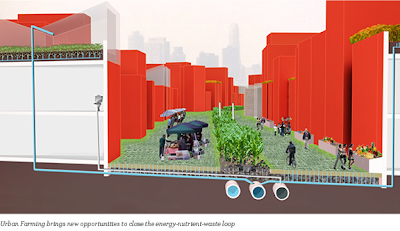Evaluation
Implementation of our computational model on a test site in the Brooklyn Navy Yard validated some conclusions from the theoretical experiments in the previous chapter and called into question some computational steps as needing further development.
Settlement distribution was shown to work within a custom mesh boundary. Boundary conditions were implemented as attractors fairly successfully as the simulation was able to generate a tissue which seems to function as an extension of the surrounding urban fabric.
The network function identified wholesale supplier locations, distributed shops and connected them with efficient distribution trees. The adequacy of the overlap function in creating continuous and circuitous networks for social movement was hard to evaluate due to small sample size.
This problem of the social network was further amplified after adapting the built forms to the network morphology. We can see 'deep' aggregations of dwelling units without connection to primary network routes. These need to be connected in future development. Additionally, the visualisations show that this last algorithm operates in a 'broad stroke'. The output generated requires further refinement before proceeding to detail design. Environmental parameters could inform this next step in the future.




